Subfamily Gerbillinae Subgenus ChelionesThomas, 1919 Phylum Chordata Rank Species | Scientific name Meriones hurrianae Higher classification Meriones Order Rodent | |
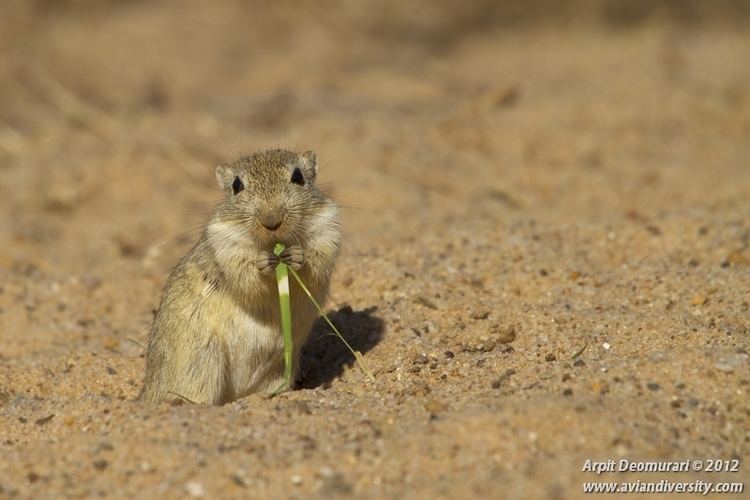 | ||
Similar Meriones, Gerbil, Rodent, Indian gerbil, Libyan jird | ||
The Indian desert jird (Meriones hurrianae) is a species of jird found mainly in the Thar Desert in India. Jirds are closely related to gerbils.
Contents
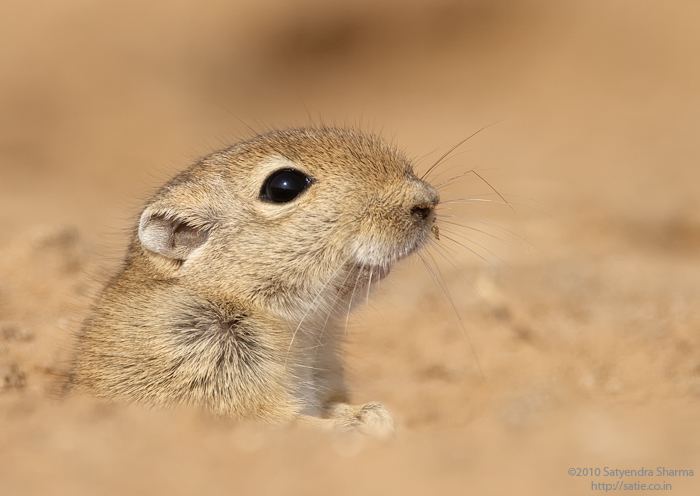
Distribution
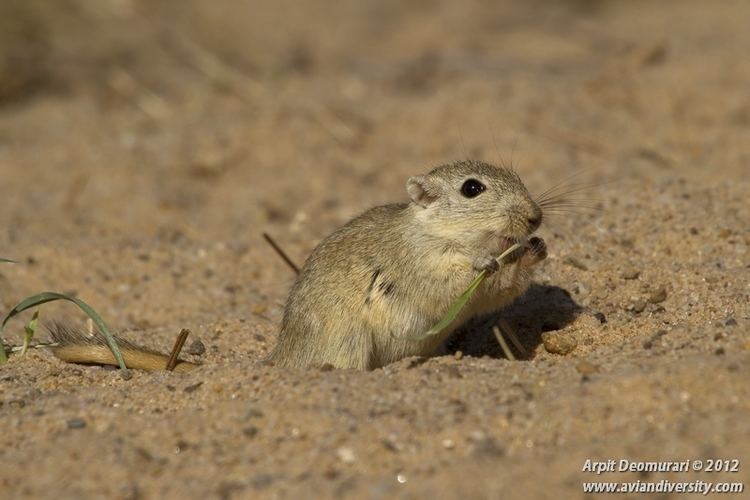
The Indian desert jird is found in southeastern Iran and Pakistan to northwestern India. In India they can be found in Rajasthan and Gujarat.
Description
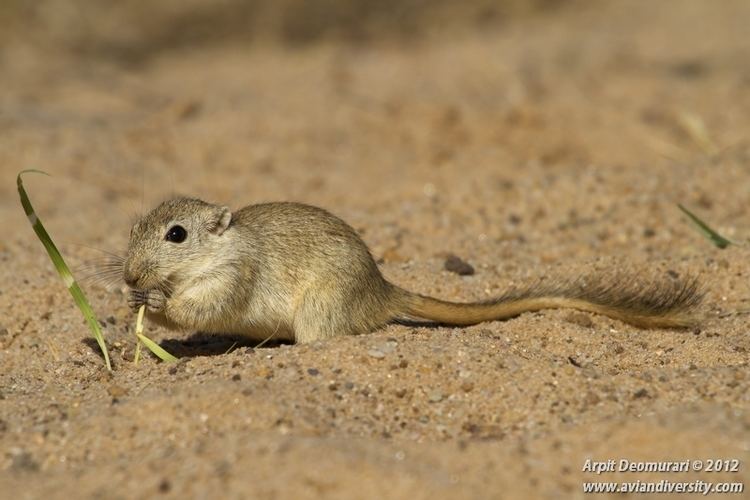
The Indian desert jird has a grey-brown coat with yellowish-grey belly. It is approximately 12–14 centimetres (4.7–5.5 in) long and has a tail 10–15 cm (3.9–5.9 in) long. The distinguishing characteristics include short ears, long black claws and orange incisors.
Habitat
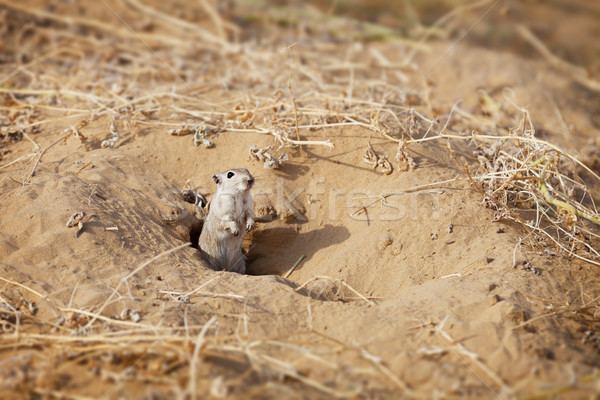
Jirds inhabit desert and barren areas preferring firm soil. They are not to be found in pure sand dunes or rocky outcrops.
Habits

The jirds are gregarious and their burrows are seen close by. Each jird will have at least two or more entrances to his burrow complex. Often the entrance is in the shade of a tree or near the trunk of bushes. They feed on seeds, roots, nuts, grasses and insects.
Difference between 'jirds' and 'gerbils'
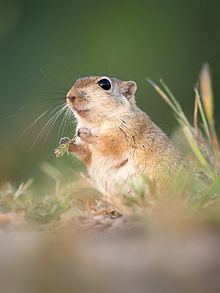
Jirds are closely related to gerbils but are differentiated by the absence of long hind feet and the characteristic erect posture of a gerbil. The tail is generally shorter than the head and body in a jird. It also has much shorter ears. In addition, the Indian desert jird is diurnal, in comparison to the three common gerbil species found in India which are nocturnal.
